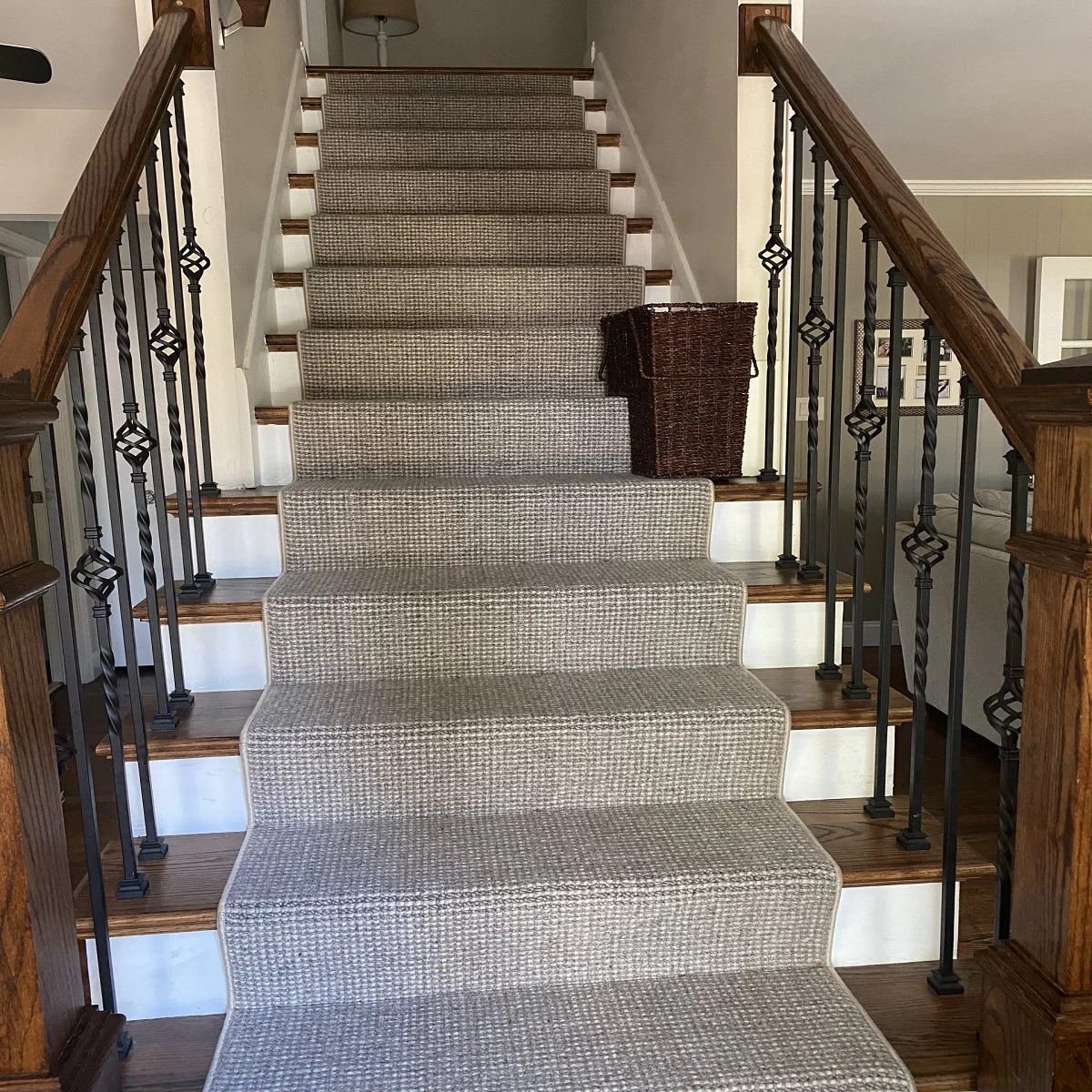

Articles
How Much Carpet Runner For 13 Stairs
Modified: January 9, 2024
Looking for articles on determining the amount of carpet runner needed for 13 stairs? Find expert advice and tips to help you make the right choice.
(Many of the links in this article redirect to a specific reviewed product. Your purchase of these products through affiliate links helps to generate commission for Storables.com, at no extra cost. Learn more)
Introduction – Explanation of the Importance of a Carpet Runner for Stairs
When it comes to staircases, functionality and safety are of paramount importance. Installing a carpet runner on stairs not only adds a touch of elegance and style to your home decor, but it also offers numerous practical benefits. A carpet runner provides a non-slip surface, reduces noise, protects the stairs from wear and tear, and adds an extra layer of comfort underfoot. Whether you have a grand staircase or a simple flight of steps, a carpet runner can transform your stairs into a beautiful focal point of your home.
One of the main advantages of having a carpet runner on stairs is the enhanced safety it provides. Stairs can be slippery, especially if they are made of hard materials like wood or tile. The addition of a carpet runner with a textured surface improves traction and reduces the risk of slips and falls. This is particularly crucial if you have young children, elderly family members, or pets in your home.
In addition to safety, a carpet runner also acts as a noise barrier. The sound of loud footsteps echoing on hardwood or laminate stairs can be annoying, especially in multi-level homes. By installing a carpet runner, you can significantly reduce the noise, creating a quieter and more peaceful environment for everyone.
Another benefit of having a carpet runner on stairs is the protection it offers to the underlying stairs. Stairs are prone to wear and tear, especially in high-traffic areas. Over time, constant use can cause the surface of the stairs to become scratched, scuffed, or worn down. A carpet runner acts as a barrier, shielding the stairs from damage and extending their lifespan.
Not only does a carpet runner provide practical benefits, but it also adds aesthetic appeal to your staircase. With a wide range of colors, patterns, and textures available, you can choose a carpet runner that complements your existing interior design scheme. Whether you prefer a classic, traditional look or a modern, contemporary feel, there is a carpet runner that can elevate the overall look and feel of your staircase.
Overall, a carpet runner is a worthwhile investment for your stairs. It offers safety, sound reduction, protection, and style all in one. When choosing a carpet runner, it is essential to consider factors such as durability, maintenance requirements, and the overall cost. By carefully selecting the right carpet runner for your stairs, you can enhance the functionality and visual appeal of your space while ensuring the safety and comfort of your loved ones.
Key Takeaways:
- Enhance Safety and Style: A carpet runner for stairs offers safety benefits, noise reduction, and aesthetic appeal. Choose the right material, measure accurately, and install with care for a functional and stylish staircase.
- Longevity and Maintenance: Regular care, proper installation, and material choice impact the longevity of a carpet runner. Consider durability, style, and maintenance for a well-maintained and long-lasting investment in your home.
Read more: How To Install A Carpet Runner On Stairs
Measuring the Stairs – Step-by-step Guide on How to Measure the Stairs Accurately for a Carpet Runner
Before purchasing a carpet runner for your stairs, it is crucial to measure them accurately to ensure a perfect fit. Improper measurements can result in a runner that is either too short or too long, compromising both the aesthetics and functionality of your staircase. To help you get accurate measurements, follow this step-by-step guide:
- Start at the bottom: Begin by measuring the first riser, which is the vertical portion of the step. Place the measuring tape at the bottom of the riser, right where it meets the tread, and measure all the way to the top of the tread.
- Measure the width: Next, measure the width of a single tread. Place the measuring tape across the top of the tread from one side to the other. Make sure to measure the widest part of the tread to ensure your carpet runner will provide full coverage.
- Count the number of stairs: Take note of the total number of stairs that you want to install the carpet runner on. This will be essential when determining the appropriate length of the runner.
When measuring, it is recommended to use a flexible measuring tape for accuracy. Additionally, it’s a good idea to measure each step individually rather than relying on the overall length of the staircase, as stairs can sometimes vary in size.
Once you have measured the dimensions of each individual step, you will have the necessary information to determine the length of the carpet runner needed. Measure from the bottom of the first riser to the top of the last tread, including all the risers and treads in between. This measurement will determine the total length of carpet runner required to cover your stairs.
It’s important to note that when installing a carpet runner, there should be a small gap on either side of the runner to allow the edges to be tucked under the nosing (the overhanging part of the tread). This ensures a secure and finished look. Take this into consideration when determining the width of your carpet runner.
By following these simple steps and taking accurate measurements, you can ensure that your carpet runner fits perfectly and enhances both the safety and aesthetic appeal of your staircase. Remember, precision is key when it comes to measuring for a carpet runner, so take your time and double-check your measurements before making your purchase.
Determining the Length of Carpet Runner Needed – Calculation Method to Determine the Appropriate Length of Carpet Runner for 13 Stairs
When it comes to determining the length of a carpet runner needed for a set of stairs, the number of stairs plays a crucial role. In this case, we will focus on calculating the appropriate length of carpet runner for 13 stairs. The calculation method involves a simple equation:
Total Length of Carpet Runner = (Number of Stairs x Tread Length) + (Number of Risers x Riser Height)
Let’s break down the equation into its components:
- Number of stairs: In this case, we have 13 stairs.
- Tread length: The tread length refers to the horizontal part of the step. This measurement should be taken from the edge of one tread to the edge of the next tread. Let’s assume the tread length is 36 inches.
- Riser height: The riser height is the vertical part of the step. Measure the height from the top of one tread to the top of the next tread. Assuming the riser height is 7 inches.
Using these measurements, we can now calculate the total length of carpet runner needed:
(13 stairs x 36 inches) + (12 risers x 7 inches) = 468 inches
Therefore, you would need a carpet runner that is approximately 468 inches in length to cover the 13 stairs adequately.
Keep in mind that this calculation assumes that the carpet runner will cover the entire stair, starting from the bottom of the first riser and ending at the top of the last tread.
It’s worth noting that these measurements are general guidelines, and the actual length of the carpet runner may vary based on personal preferences or specific stair dimensions. It is always recommended to add a few extra inches to the calculated length to account for any adjustments or variations in installation.
Additionally, consider the width of the carpet runner to ensure it provides full coverage of the tread width and allows for a small gap on either side to tuck the edges under the nosing for a secure and finished look.
By following this calculation method, you can determine the appropriate length of carpet runner needed for 13 stairs, ensuring a precise and aesthetically pleasing installation.
Material Options for Carpet Runners – Overview of Different Types of Materials Available for Carpet Runners and Their Pros and Cons
When choosing a carpet runner for your stairs, considering the material is essential. Different materials offer various benefits in terms of durability, aesthetics, comfort, and maintenance. Here is an overview of the most common material options for carpet runners and their pros and cons:
1. Wool
Wool is a popular choice for carpet runners due to its natural, luxurious feel and durability. It is known for its softness, stain resistance, and ability to retain its shape over time. Wool carpet runners are also naturally fire-resistant and provide excellent insulation. However, wool may be more expensive compared to other materials, and it may require professional cleaning.
Read more: How To Install Carpet Stair Runner
2. Nylon
Nylon is a synthetic fiber that is highly durable and resistant to wear and tear. It offers excellent stain resistance and is easy to clean, making it a practical option for high-traffic areas like stairs. Nylon carpet runners are available in a wide range of colors and patterns, allowing for versatile design options. However, nylon may not have the same luxurious feel as natural fibers like wool.
3. Polyester
Polyester carpet runners are known for their softness and vibrant color options. They are stain-resistant, fade-resistant, and budget-friendly. Polyester is also a sustainable choice as it can be made from recycled materials. However, polyester may not be as durable as other materials and may show signs of wear more quickly.
4. Polypropylene/Olefin
Polypropylene, also known as olefin, is a synthetic material that is resistant to stains, fading, and moisture. It is a practical option for areas prone to spills or moisture, such as basement stairs. Polypropylene carpet runners are also affordable and easy to clean. However, it may not have the same softness or plush feel as other materials.
5. Sisal and Natural Fiber Blends
Sisal and natural fiber blends, such as jute or seagrass, provide a textured and organic look to your stairs. These natural fibers are sustainably sourced and biodegradable. They are durable and suitable for high-traffic areas. However, they may require regular maintenance and may not be as soft or comfortable underfoot as other materials.
Read more: How Much To Carpet Stairs
6. Blended Materials
Blended materials, such as wool and synthetic fiber blends, offer the best of both worlds. They combine the natural softness and durability of wool with the added benefits of synthetic fibers like nylon or polyester. Blended carpet runners provide a balance between luxury, performance, and affordability.
Ultimately, the choice of material for your carpet runner depends on your personal preferences, budget, and the specific needs of your staircase. Consider factors like durability, maintenance requirements, comfort, and aesthetics when making a decision. Regardless of the material you choose, a well-selected carpet runner can enhance the overall look and feel of your stairs while providing comfort and protection for years to come.
Factors to Consider when Choosing a Carpet Runner – Discussion of Factors Such as Durability, Style, and Maintenance That Should Be Considered Before Making a Decision
Choosing the right carpet runner for your stairs involves considering various factors that can impact its durability, style, and maintenance. To ensure you make an informed decision, here are some essential factors to consider:
1. Durability
One of the primary factors to consider when choosing a carpet runner is its durability. Stairs are high-traffic areas that experience heavy foot traffic, so it’s important to select a runner that can withstand the wear and tear. Look for materials known for their durability, such as wool or nylon. These materials are highly resilient and can resist matting, crushing, and staining, ensuring your carpet runner remains in good condition for an extended period.
2. Style
The style of the carpet runner should complement your overall interior design aesthetic. Consider the color, pattern, and texture that will harmonize with your existing décor. Carpet runners come in a wide range of options, from solid colors to intricate patterns, allowing you to find one that suits your personal style. Looking for a runner that enhances the beauty of your staircase and adds a touch of elegance to your space.
Read also: 8 Superior Carpet Runner For Stairs For 2024
3. Maintenance
Maintenance is another crucial factor to consider when choosing a carpet runner. Stairs can accumulate dirt, dust, and other debris quickly, so a carpet runner that is easy to clean and maintain will save you time and effort. Synthetic fibers like nylon and polyester are generally easier to clean compared to natural fibers like wool. Consider your lifestyle and how much time you can dedicate to regular maintenance to make an informed choice.
4. Budget
Your budget will play a significant role in the type of carpet runner you choose. Different materials and brands come with varying price tags. While wool is considered a high-quality and luxurious option, it may also be more expensive than synthetic fibers. Determine your budget beforehand and explore different material options to find the best balance between quality and affordability.
5. Safety
Safety is paramount when it comes to choosing a carpet runner for stairs. Look for runners with a non-slip backing or consider using rug pads to ensure stability and prevent accidents. Additionally, consider the thickness and density of the carpet runner. A thicker runner can provide extra cushioning underfoot and reduce the risk of injury in case of a fall.
6. Environmental Impact
For those concerned about the environmental impact, consider eco-friendly options when selecting a carpet runner. Some materials, such as natural fibers like wool or sisal, are sustainable and biodegradable. Additionally, look for carpet runners made from recycled materials if you want to reduce your carbon footprint.
By carefully considering these factors, you can select a carpet runner that meets your practical needs, fits your style preferences, and ensures long-term satisfaction. Take the time to research different options, explore samples, and consult with experts to make a well-informed decision.
Read more: How Much Carpet Do I Need For 13 Stairs
Cost Analysis – Examination of the Average Cost of Carpet Runners and Tips for Budgeting
When it comes to purchasing a carpet runner for your stairs, considering the cost is an important factor in your decision-making process. The cost of carpet runners can vary depending on factors such as material, size, brand, and style. Here is a cost analysis of carpet runners and some tips for budgeting:
Average Cost of Carpet Runners
The average cost of carpet runners can range from affordable to high-end, depending on the factors mentioned above. Here is a general breakdown of the cost range:
- Low End: At the lower end of the price spectrum, you can find budget-friendly options starting at around $10 to $20 per linear foot. These may be made from synthetic materials like polypropylene or polyester.
- Mid-Range: In the mid-range, carpet runners made from durable materials like nylon or wool can range from $20 to $50 per linear foot. These offer a good balance of quality, durability, and affordability.
- High-End: High-end options made from premium materials like luxurious wool or natural fiber blends can cost $50 or more per linear foot. These are often handcrafted, have intricate designs, and offer exceptional durability and style.
Keep in mind that the total cost of your carpet runner will depend on the length of your stairs and the coverage you desire. Measure your stairs accurately and calculate the total linear footage to get an estimate of the cost.
Tips for Budgeting
When budgeting for a carpet runner, consider the following tips:
1. Set a Realistic Budget:
Determine how much you are willing to spend on a carpet runner and stick to that budget. Having a budget in mind will help narrow down your options and prevent overspending.
2. Consider Long-Term Value:
While it may be tempting to opt for a cheaper carpet runner, keep in mind the long-term value. Investing in a higher quality runner, even if it costs more upfront, can save you money in the long run by lasting longer and requiring less frequent replacement.
3. Prioritize Durability:
Consider the durability of the carpet runner before making a decision. An affordable runner that wears out quickly may end up costing you more in the long term. Choose a material known for its durability, like wool or nylon, to ensure longevity.
4. Compare Prices and Shop Around:
Take the time to compare prices from different retailers and online stores. Look for deals, discounts, and promotions to maximize your budget. Don’t hesitate to negotiate or ask for a better price if possible.
5. Consider Installation Costs:
Factor in any additional costs associated with professional installation if needed. While some runners can be DIY-installed, others may require expertise, especially if your stairs have complex angles or curves.
6. Plan for Maintenance:
Consider the long-term maintenance costs when budgeting for your carpet runner. Some materials may require professional cleaning or specialized care, which can add to the overall cost. Factor in these maintenance expenses to ensure you can uphold the runner’s longevity.
By considering these cost analysis and budgeting tips, you can find a carpet runner that fits within your budget while still meeting your aesthetic and functional needs. Remember to prioritize quality, durability, and value for your investment.
Installation Process – Overview of the Steps Involved in Installing a Carpet Runner on Stairs with Tips for a Successful Installation
Installing a carpet runner on stairs can elevate the look of your staircase while providing safety and comfort. While the process may seem daunting, it can be accomplished with some basic tools and careful attention to detail. Here is an overview of the steps involved in installing a carpet runner on stairs, along with tips for a successful installation:
Read more: How To Install Runner On Stairs
1. Gather the Necessary Tools and Materials
Before beginning the installation process, gather all the tools and materials you will need. These may include measuring tape, tackless strips, stair rods, a staple gun or hammer, carpet adhesive, and, of course, your chosen carpet runner. Ensure that you have everything on hand to streamline the installation.
2. Prepare the Stairs
Clean the stairs thoroughly to remove any dust or debris. Ensure that the surface is smooth, free from protruding nails or staples, and in good condition. If necessary, make any repairs or adjustments before proceeding with the installation.
3. Install Tackless Strips
Measure and cut tackless strips to match the width of each stair, ensuring they are slightly shorter than the width of the carpet runner. Install the tackless strips along the back of each tread, approximately 1 inch from the edge. Use a staple gun or hammer to secure the strips in place, making sure they are firmly attached.
4. Cut and Position Carpet Runner
Measure and cut the carpet runner according to the length of each stair, adding a few extra inches for adjustments and tucking under the nosing. Position the carpet runner at the base of the stairs, allowing a small gap on either side to tuck the edges under the nosing. Make sure the runner is centered and aligned properly before proceeding.
5. Secure the Runner
Starting from the bottom step, use a staple gun or hammer to attach the carpet runner to the tackless strips along the edge of the tread. Pull the carpet runner taut as you staple it, ensuring a snug fit. Work your way up each stair, smoothing out any wrinkles or uneven areas as you go.
6. Attach Stair Rods (Optional)
If desired, you can enhance the aesthetics and stability of the carpet runner by attaching stair rods. Measure and mark the positions for the stair rods on each stair, ensuring they are evenly spaced. Install the stair rods according to the manufacturer’s instructions, securing the runner in place. Stair rods add a decorative touch and help keep the carpet runner in position.
Tips for a Successful Installation:
- Take accurate measurements of each stair to ensure a precise fit.
- Use a carpet runner with a non-slip backing for added safety.
- Consider using a double-sided carpet tape or adhesive in addition to the tackless strips for extra stability.
- Take your time and work carefully to ensure a professional-looking installation.
- Use a knee kicker or carpet stretcher to ensure a tight and secure fit.
- Trim any excess carpet runner at the top of the stairs, tucking it neatly under the nosing for a clean finish.
- Consult professional installation guides or seek assistance if you are unsure about any step of the process.
By following these steps and tips for a successful installation, you can enjoy a beautiful and professionally installed carpet runner on your stairs. Take pride in your workmanship and enjoy the added charm and comfort that the carpet runner brings to your staircase and home.
Maintenance and Care Tips – Tips and Techniques for Cleaning and Maintaining the Carpet Runner to Ensure Longevity
Maintaining and caring for your carpet runner is crucial to ensure its longevity and keep it looking its best. By following these tips and techniques for cleaning and maintenance, you can enjoy a beautiful and well-maintained carpet runner for years to come:
Read more: How To Measure Stairs For Runner
1. Regular Vacuuming
Regular vacuuming is essential to keep your carpet runner free from dirt, dust, and debris. Use a vacuum cleaner with a brush attachment or a dedicated carpet cleaner. Vacuum at least once a week or more frequently if your stairs experience heavy foot traffic.
2. Spot Cleaning
Address spills and stains promptly with spot cleaning. Blot the affected area gently with a clean, white cloth or paper towel to soak up any excess liquid. Avoid rubbing or scrubbing as it may spread the stain or damage the fibers. Use a mild cleaning solution or a carpet cleaner specifically designed for spot cleaning, following the manufacturer’s instructions.
3. Deep Cleaning
Periodically deep clean your carpet runner to remove embedded dirt and refresh its appearance. You can employ various methods for deep cleaning, such as steam cleaning, dry cleaning, or hiring professional carpet cleaning services. Follow the recommended guidelines for the chosen method and allow the carpet runner to dry thoroughly before use.
4. Protect from Sunlight
Protect your carpet runner from prolonged exposure to direct sunlight, as it can fade the colors and weaken the fibers. Use curtains, blinds, or window films to minimize the sunlight’s impact on your carpet runner. If possible, rotate the runner periodically to ensure even wear and sun exposure.
Read more: What Is A Carpet Runner
5. Use Doormats and Rugs
Place doormats at the entryways and rugs in high-traffic areas leading to your stairs to prevent excess dirt and debris from reaching your carpet runner. Doormats and rugs act as a first line of defense, reducing the amount of dirt brought onto your runner, and are easier to clean or replace when necessary.
6. Handle Spills with Caution
When spills occur, handle them with caution to prevent further damage. Blot the spill immediately using a clean cloth, avoiding excessive moisture. Avoid using harsh chemicals or abrasive cleaners, which can damage the carpet fibers. If the spill is severe or persistent, seek professional cleaning services.
7. Rotate the Carpet Runner
To ensure even wear and tear, periodically rotate the carpet runner or change its position on the stairs. This helps distribute foot traffic and prevents excessive wear on specific areas. Consider rotating the runner every few months or as needed.
8. Professional Cleaning
Consider professional cleaning services for your carpet runner, especially for deep cleaning or stubborn stains. Professional cleaners have the expertise and specialized equipment to effectively clean and restore your carpet runner, extending its lifespan.
Following these maintenance and care tips will help keep your carpet runner looking its best and prolong its lifespan. By incorporating regular vacuuming, prompt spot cleaning, and occasional deep cleaning, you can maintain the beauty and durability of your carpet runner for years to come.
Read more: How To Fix Carpet On Stairs
Conclusion – Recap of Key Points Covered in the Article and Final Considerations for Purchasing a Carpet Runner for 13 Stairs
Throughout this article, we have explored the importance of a carpet runner for stairs and discussed various aspects related to measuring, choosing, installing, and maintaining a carpet runner for 13 stairs. Let’s recap the key points covered and provide final considerations for purchasing a carpet runner:
We began by highlighting the importance of a carpet runner for stairs, emphasizing its role in enhancing safety, reducing noise, protecting the stairs, and adding aesthetic appeal to your home decor.
We then delved into the steps involved in measuring the stairs accurately, emphasizing the significance of taking precise measurements for a perfect fit.
Next, we discussed the calculation method to determine the appropriate length of a carpet runner for 13 stairs, considering factors such as tread length and riser height.
The article then explored different material options for carpet runners, including wool, nylon, polyester, polypropylene, natural fibers, and blends, highlighting the pros and cons of each material to help you make an informed decision.
We also discussed important factors to consider when choosing a carpet runner, such as durability, style, maintenance requirements, budget, safety, and environmental impact. These factors play a crucial role in finding the right carpet runner that meets your needs and preferences.
A cost analysis was presented to give you an idea of the average cost range for carpet runners, along with tips for budgeting and making a value-driven purchase.
The article then provided an overview of the installation process for a carpet runner on stairs, outlining the necessary steps and offering tips for a successful installation. Installing the carpet runner correctly ensures a professional and secure fit.
Maintenance and care tips were also discussed to help you keep your carpet runner looking its best and ensure its longevity. Regular vacuuming, spot cleaning, deep cleaning, protection from sunlight, and careful handling of spills are all essential to maintain a well-maintained carpet runner.
Finally, in conclusion, it’s important to consider all the information and factors presented when purchasing a carpet runner for your 13 stairs. Think about how the carpet runner will enhance the functionality and style of your staircase, consider your budget, and select the material that suits your preferences and lifestyle.
Whether you opt for a durable wool runner, a budget-friendly synthetic fiber like nylon or polyester, or an eco-friendly natural fiber blend, ensure that you install it correctly and maintain it regularly to ensure its longevity and enjoyment for years to come.
By applying the knowledge and considerations discussed in this article, you can confidently select, install, and maintain a carpet runner for your 13 stairs that not only enhances the safety and comfort of your staircase but also adds a touch of elegance to your home.
Frequently Asked Questions about How Much Carpet Runner For 13 Stairs
Was this page helpful?
At Storables.com, we guarantee accurate and reliable information. Our content, validated by Expert Board Contributors, is crafted following stringent Editorial Policies. We're committed to providing you with well-researched, expert-backed insights for all your informational needs.
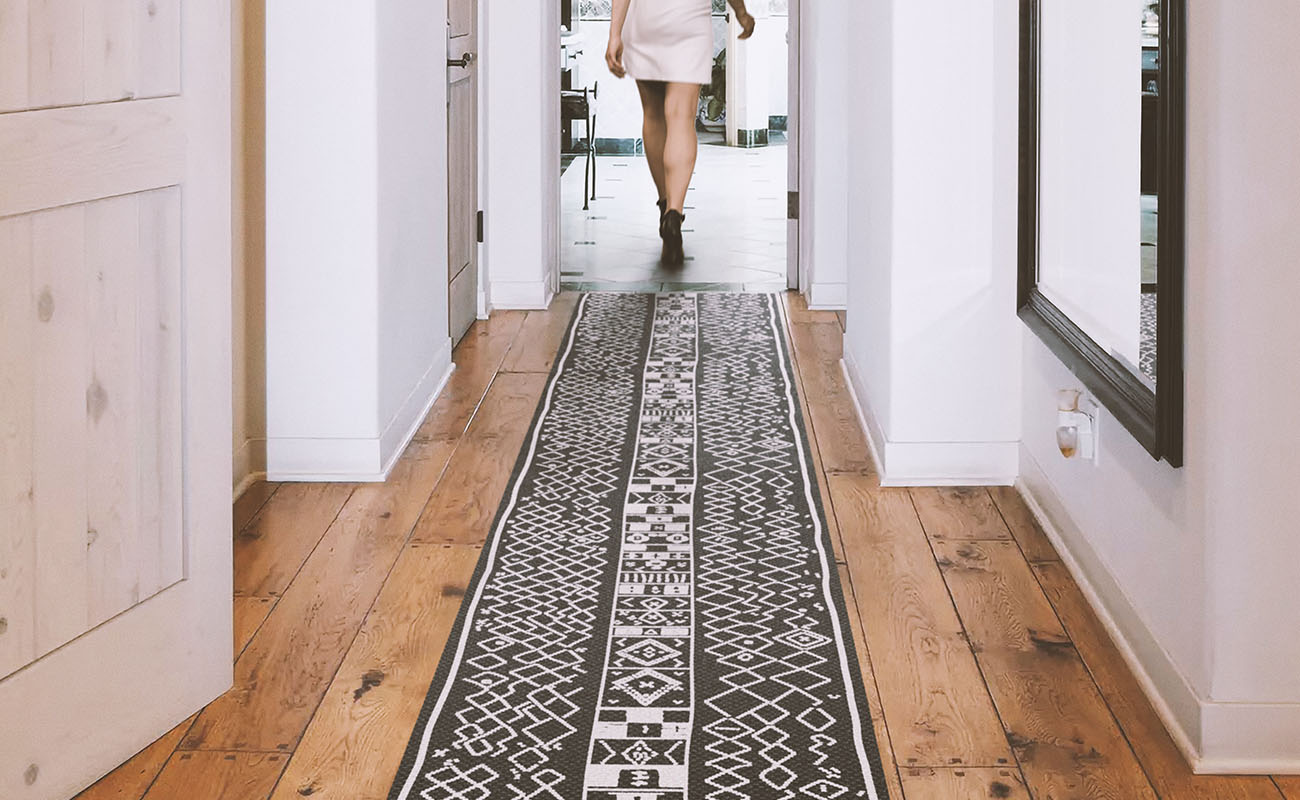
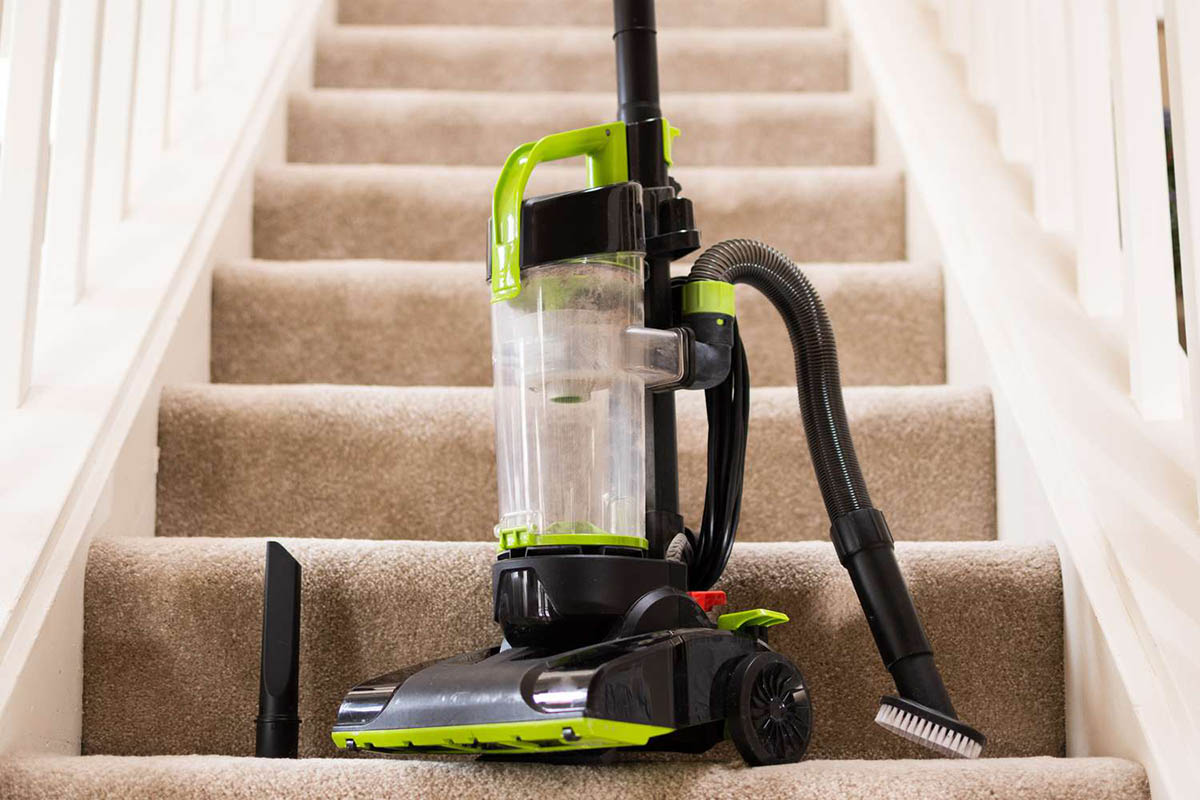
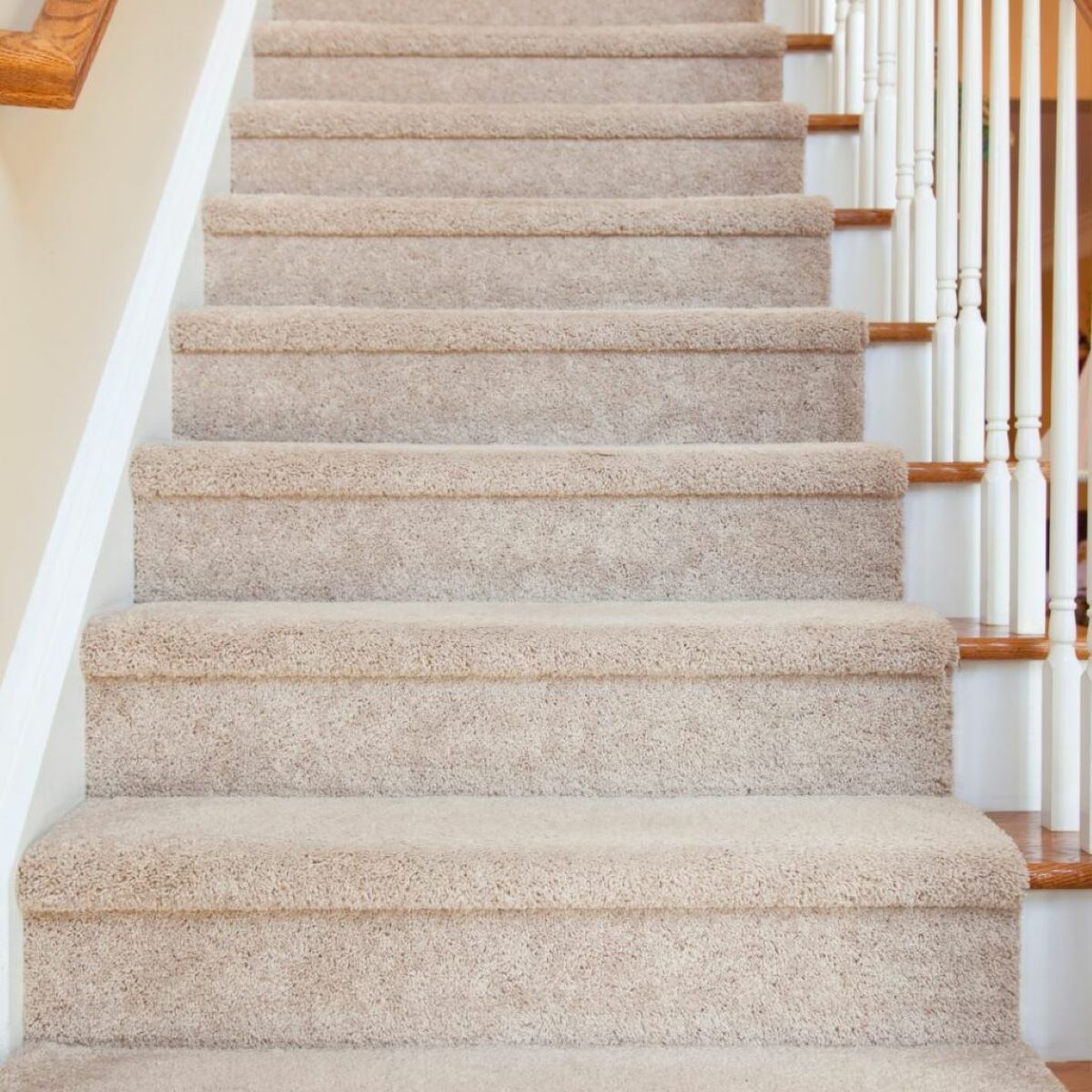
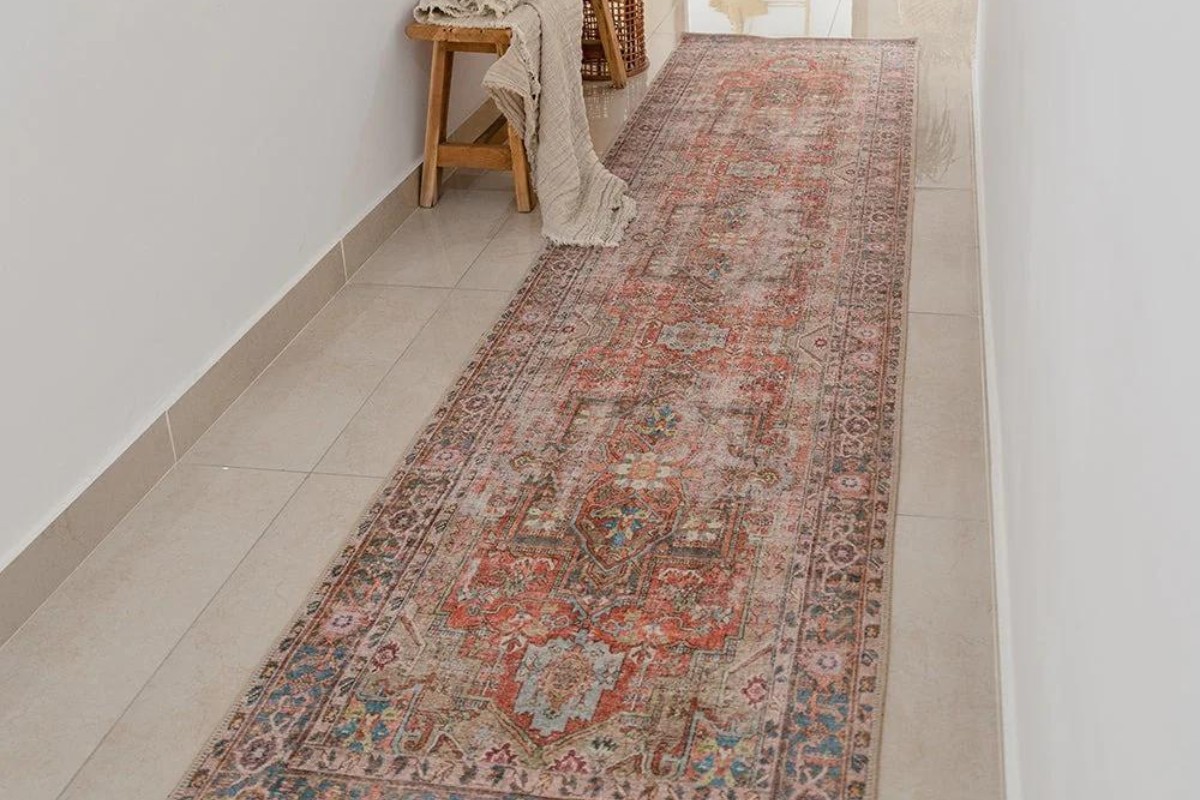
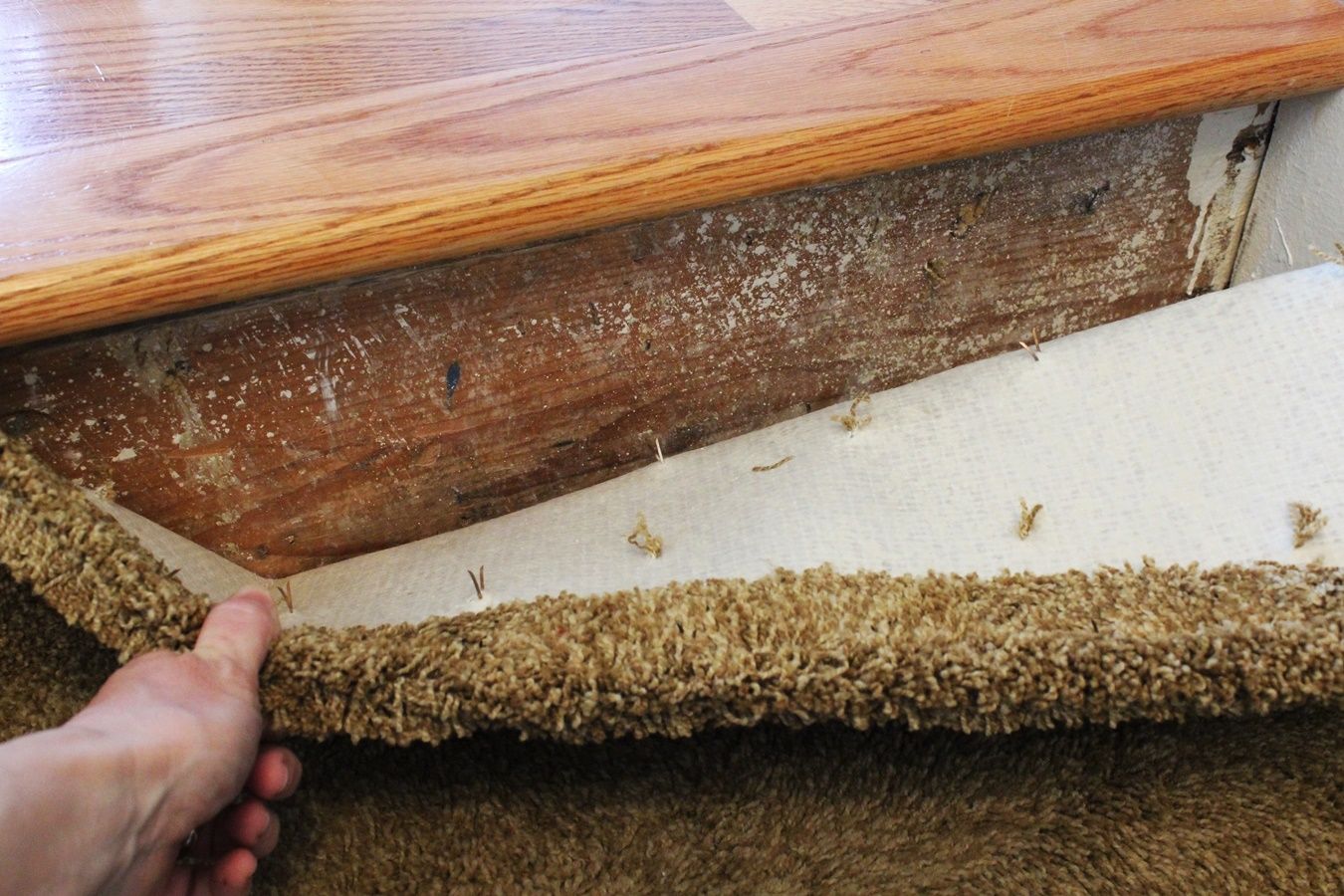
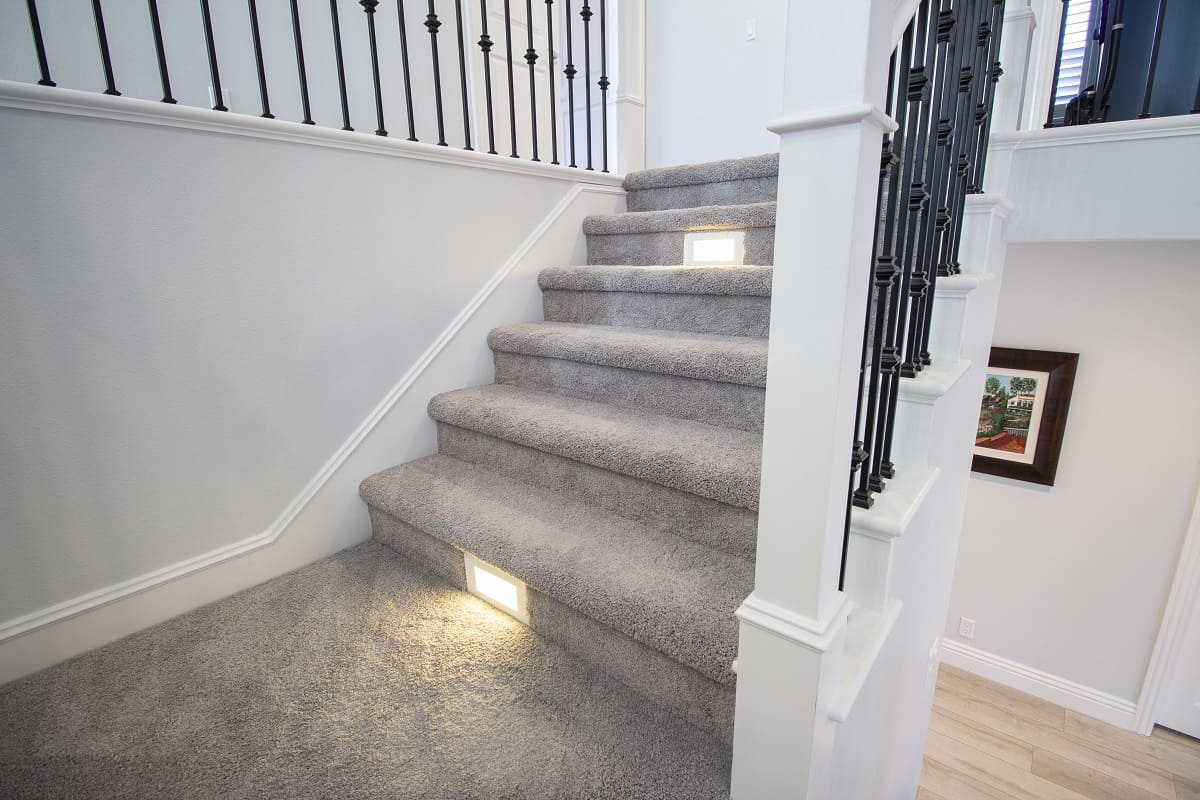

0 thoughts on “How Much Carpet Runner For 13 Stairs”